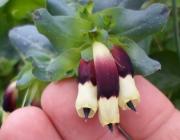Abstract:
Saline soils contain multiple types of salt, each of them may exert a different effect on seed germination and seedling growth. The aim of this study is to assess the effects of five types of salt on the seed germination and radicle establishment of common bean (Phaseolus vulgaris L. var. Djedida). The experiment was set out as a factorial experiment based on completely randomized design with four replications of ten seeds for the seed germination and twelve replicates for the seedling growth. We used five kinds of salts (NaCl, Na2SO4, CaCl2, CaCO3 and KCl) with concentrations of 0, 100, 200 and 300 mM. Seeds were incubated in Petri dishes at 25°C, in the dark, for 10 days. The results of analysis of variance indicated that the effects of salt types and concentrations, and their interaction effect were significant in all measured traits (P< 0.01). However, no significance effect was found on secondary roots number and seedlings dry biomass with CaCO3 treatment solution. According to the results, the inhibitory effects of the five salt types differed significantly. Indeed, germination of common bean seeds by various salts were in the order of NaCl > KCl > CaCO3 > Na2SO4 > CaCl2. However, the taproot length, the number of secondary roots and the seedlings dry weight by various salts were in the order of CaCO3 > KCl > NaCl > CaCl2 > Na2SO4. The effect of salt concentration was also obvious. The reduction in dry biomass of cotyledons is proportional to germination rates and to the development of seedlings in dry biomass and in size. Seeds of P. vulgaris var. Djedida were able to germinate under all concentrations of the various types of salt. The lowest final germination percentage (FGP) was obtained under 300 mM of all salts recording the following values: CaCO3 - 60%, NaCl - 60%, KCl - 52.5%, Na2SO4 - 50% and CaCl2 - 27.5%. During germination stage, the radicle emergence would be controlled by the environment osmolarity, while the later growth of the seedling would be limited by the reserve mobilization.
Publisher's Version
